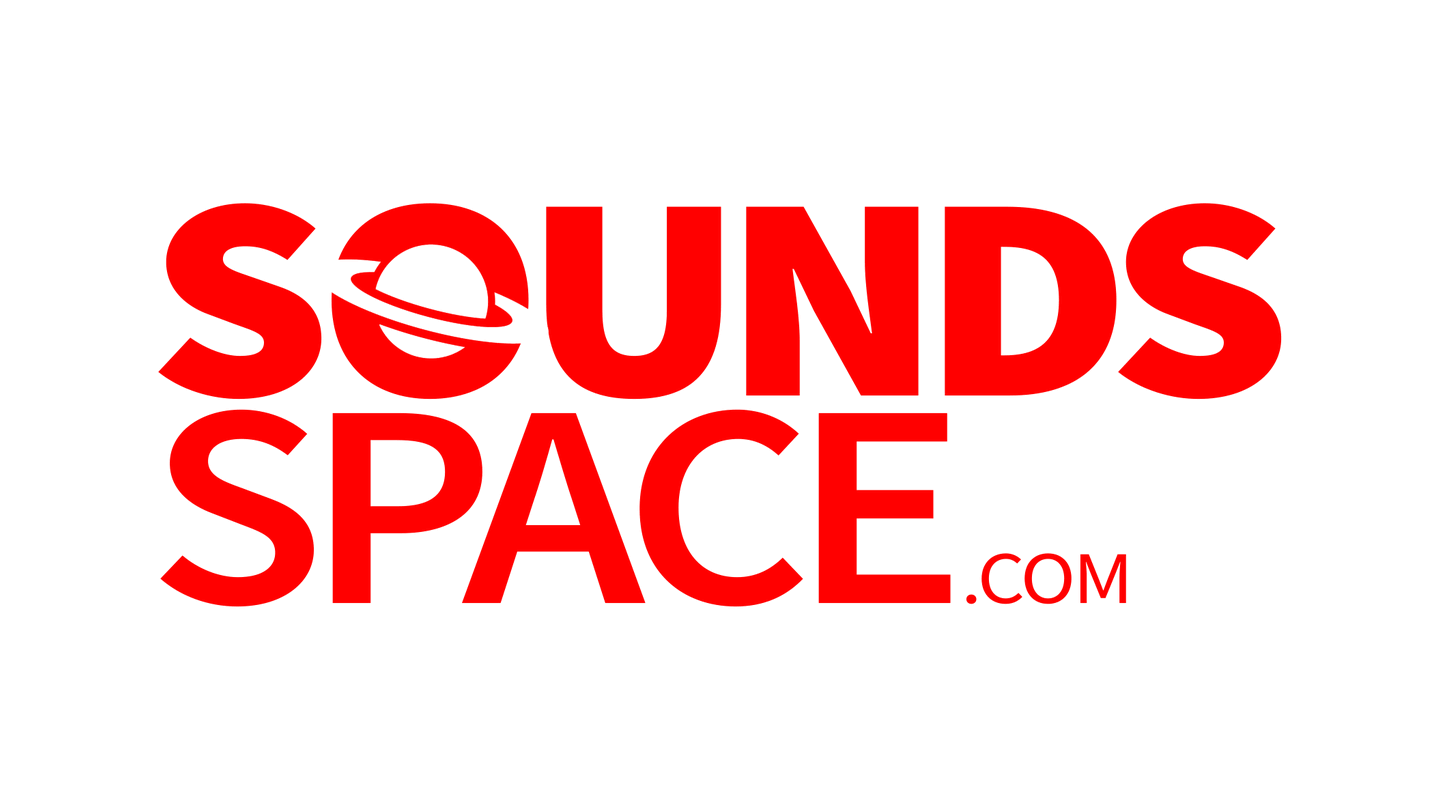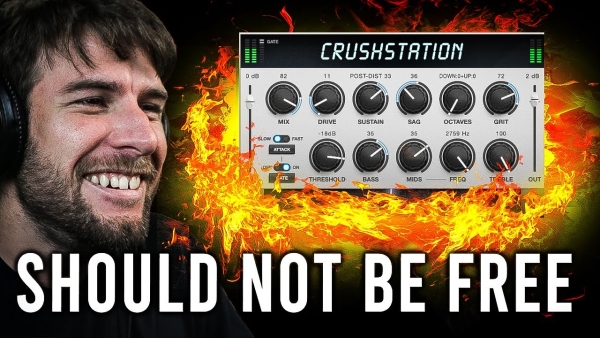Eventide CrushStation Is Free Right Now: Why This $99 Distortion Plug-in Deserves a Permanent Spot in Your Chain
If you’ve been waiting for an excuse to add a truly musical, modern distortion to your toolkit, Eventide just removed the last barrier: CrushStation, normally $99, is free for a limited time. And this isn’t some watered-down teaser—this is the full H9-series plug-in with the same morphable, performance-ready engine you’d expect from Eventide’s pedigree. Multiple respected outlets have confirmed the giveaway (and that there’s a checkout code you’ll need), so if you want it, move quickly.
Below, we’ll cover what makes CrushStation special, how to get it, how it’s different from typical “clip-and-fuzz” saturators, and some creative recipes that go way beyond “make it louder.”
What is CrushStation?
CrushStation is Eventide’s flagship stereo overdrive/distortion plug-in from the H9 series—the same sound-design lineage as the revered H9 Harmonizer pedal. It’s designed to travel from tasteful saturation to full-on sonic demolition while remaining controllable, expressive, and mix-friendly. Key features include:
-
Morphable control via the Ribbon macro, which smoothly sweeps between two parameter snapshots, and a Hotswitch for instant A/B jumps—perfect for automating builds, drops, and solo boosts.
-
Integrated dynamics with a Sustain control for pre/post compression, a Gate for noise management, and a 3-band EQ for immediate tone-shaping.
-
Character shapers like Grit (low-end emphasis pre-drive), Octaves (blended pitch layers above/below), and Sag (the coveted “dying amp” sputter) that push it into boutique-pedal territory—minus the pedalboard.
Eventide offers CrushStation in VST3/AU/AAX for macOS and Windows, and the current installer includes iLok components (you’ll need an iLok account; no hardware dongle required).
How to get it free (and what to know)
-
As of August 15, 2025, Eventide is offering CrushStation for $0 (regular $99) for a limited time. Multiple sources note you’ll need to apply a checkout code (reported as PIRATE100) at Eventide’s store. If the code changes or the promo ends, the deal may no longer apply—so check the product page and current coverage before checkout.
-
System & formats: macOS/Windows; AU/VST3/AAX; iLok licensing components are bundled in recent installers.
Why CrushStation stands out in a crowded distortion field
Plenty of plug-ins clip, saturate, and fuzz. CrushStation’s advantage is the way it stacks multiple musical stages—pre-emphasis, drive, compression, octave blending, and post-EQ—behind an expressive macro system. In practice, that means you can compose the distortion’s movement like an instrument, not just set-and-forget a static crunch.
The Ribbon: performance in one gesture
The Ribbon lets you define a “cleaner” and a “wilder” state, then sweep between them. Assign it to drive, EQ tilt, octave blend, and Sag simultaneously, and you’ve built a one-handed transition from verse shimmer to chorus annihilation—automatable in your DAW or MIDI-mapped to a controller. Eventide’s H9-series philosophy is to make plug-ins playable; CrushStation is a poster child for that approach.
Octaves and Sag: character beyond simple clipping
-
Octaves can add synth-like presence to guitars, make drums sound like a broken sampler, or help a bass poke through without pure volume.
-
Sag simulates sagging power supplies and cranky tubes—great for lo-fi, splattery transients on drums and re-amping DI synths into a gritty, tactile feel.
Combining those with Grit (a low-end bias into the drive) yields a distortion that breathes and spits in time with the source instead of flattening it.
Built-in sustain, gate, and EQ: fewer extra plug-ins needed
You can sculpt the envelope and tone inside CrushStation. Pre-drive compression thickens a thin source before it hits the clipping stage; post-drive compression glues the result. The Gate keeps high-gain settings quiet between phrases. A 3-band EQ after distortion helps fit the sound into a mix without reaching for another insert.
Quick-start recipes (copy these into your session)
You’ll get great factory presets, but these recipes demonstrate why the architecture matters:
1) “Chorus Lift” Macro for Vocals
-
Set a clean state with Drive low-medium, Grit off, Octaves minimal, EQ slightly bright (+1–2 dB high shelf), Sustain post.
-
Set a hyped state with Drive medium-high, Grit moderate, Octaves blended subtly above, tiny Sag, add +1–2 dB at 2–4 kHz.
-
Map both states to the Ribbon; automate a smooth sweep into the chorus for energy without harshness.
Why it works: distortion rise + octave shimmer adds perceived loudness and excitement without raw gain.
2) “Broken Sampler” Drums
-
Drive: medium-high; Sag high for sputter; Grit moderate; Octaves blend a touch below for weight.
-
Gate: medium to clamp room tone between hits.
-
EQ: dip 300–500 Hz to declutter, slight lift at 8–10 kHz for fizz.
-
Use Hotswitch to jump from this to a cleaner parallel setting—instant fills and drops.
3) “Bass Forward Without Volume Wars”
-
Pre-emphasis: Grit low-mid; Drive medium; Octaves tiny blend an octave up for presence.
-
Sustain pre-drive to thicken before clipping.
-
EQ: gentle low-shelf control so sub stays tight.
-
Assign Ribbon to increase Octaves and Drive 10–15% for chorus moments that cut through.
4) “Wider Synth Leads”
-
Duplicate the synth track and put CrushStation only on the copy.
-
Use Octaves slightly above, Sag low, Drive modest.
-
Pan the processed copy opposite the clean original.
-
Result: stereo spread with harmonically related grit that supports the lead without smearing the center.
Genre-by-genre: where CrushStation shines
-
House/Techno: Subtle drive + post compression + low Octaves create thick, moody basslines that stay glued to the kick.
-
Drum & Bass: High Sag on parallel drums adds vintage sampler crackle; Hotswitch to full-range crush for fills.
-
Trap/Hip-Hop: Use Grit + Drive to excite 808 harmonics for small speakers; automate the Ribbon for hook emphasis.
-
Pop: Vocal polish with barely-there saturation and a 10–15% octave blend—presence without sibilant EQ boosts.
-
Indie Rock: “Studio-pedalboard” tones on guitars: set mid-gain Drive, slight high-shelf lift, Gate to calm noise between phrases.
-
Cinematic/Score: Sag + Octaves turn boring risers into torn-speaker crescendos that feel physical.
Workflow advantages in the DAW
-
One insert, many roles
CrushStation’s all-in-one design can replace a drive → comp → EQ → macro chain, which reduces latency stacking and keeps creative decisions in one UI. -
Automation-first design
Between the Ribbon macro and Hotswitch, you design movement rather than just tone. That’s crucial for modern arrangements where sections need to lift, bloom, or slam without resorting to blunt volume hikes. -
H9 pedigree
If you like Eventide’s H9 sonic footprint—polished but characterful—CrushStation is the distortion flavor of that world, ported to AU/VST3/AAX with the same performance-minded control scheme.
Practical setup notes (save yourself five minutes)
-
Licensing: You’ll use iLok (account required). Eventide’s current installer bundles the needed components, so installation is straightforward. If your DAW doesn’t see the plug-in after install, rescan plug-ins and confirm you installed the correct formats (AU for Logic, VST3 for most others, AAX for Pro Tools).
-
Formats & OS: AU/VST3/AAX on macOS and Windows; check Eventide’s product page for any OS version notes as they update minimum requirements over time.
-
Preset management: Factory presets are a strong starting point. Try saving two versions of each sound—one subtle, one extreme—and tie them to the Hotswitch so you can flip for choruses and drops without opening the UI mid-take.
How does CrushStation compare to other distortions?
-
Versus simple saturators: Many “analog warmth” tools are one-knob affairs. CrushStation’s Grit/Octaves/Sag trio gives you directional control—you decide what the circuit emphasizes and how it breaks up, not just how much.
-
Versus multi-FX suites: Big suites can be overkill when you just want musical distortion that moves. CrushStation hits the sweet spot: deep enough to sculpt, fast enough to perform.
-
Versus guitar-amp sims: Amp sims model entire rigs; great for realism, slower for sound design. CrushStation behaves more like a clever studio pedal—a faster route to hybrid, electronic-friendly crunch.
Creative routing ideas you’ll actually use
-
Parallel Dirt Send
Create an aux send with CrushStation at an aggressive setting (high Sag, mid Octaves, post-EQ presence lift). Send kick, snare, and synth leads at different levels. Now you can “glue” the high-energy elements with a single macro sweep. -
Pre-FX Driver
Put CrushStation before your spatial tools. A touch of drive + octave shimmer into a reverb or chorus yields denser harmonics that those effects can “grab,” producing richer tails without more wet level. -
Transient-Aware Dirt
On drums, set the Gate to open only on strong hits; the result is distortion that punctuates transients instead of smearing ghost notes—great for tight modern grooves.
Should you grab it?
Short answer: yes. Long answer: CrushStation is one of those rare distortions that satisfies both the engineer (gain staging, EQ, gating, dynamics inside the plug-in) and the composer/performer (Ribbon/Hotswitch macro performance). It can sit at 5% mix adding invisible glue or take center stage turning a basic loop into a show-stopping drop. At its usual $99, it’s a solid buy. At free, it’s a no-brainer—provided you catch the promo window.
Final check: where to download
Head to Eventide’s official product page and downloads area to confirm current OS support and grab the latest installer. If the free promo is still active, apply the published code at checkout (sources report PIRATE100 at the time of writing). If the offer has ended, you’ll still find the plug-in there at its standard price—keep an eye on future promos.
TL;DR
-
CrushStation = versatile, morphable Eventide distortion with built-in compression, gate, EQ, Octaves, Grit, and Sag.
-
Free for a limited time (regular $99); requires a checkout code per current coverage.
-
AU/VST3/AAX for macOS/Windows; iLok account needed; installer bundles iLok components.
-
Great for vocals, drums, bass, guitars, and synths; excels at automation and live macro control.
Getting Started with CrushStation: Quick Tips for Major DAWs
Want to hit the ground running? Here are five practical tweaks and workflow tips tailored for Logic Pro, Ableton Live, and FL Studio users:
1. Start Subtle: Dial in at 30%, not 100%
CrushStation can get extreme fast. Begin with:
-
Drive: 2.5–3.5
-
Grit: 10–15%
-
Octaves: 0%
-
Sag: Off
Then blend the mix knob to 30–40% wet for controlled harmonic richness. This keeps your tone intact while adding depth.
2. Use the Ribbon for Dynamic Transitions
-
In Logic Pro: Assign the Ribbon to a Smart Control or automate it in the automation lane. Sweep into higher drive/octaves for chorus sections.
-
In Ableton Live: Map the Ribbon to a MIDI controller knob via Live’s MIDI mapping mode for real-time control.
-
In FL Studio: Right-click the Ribbon, choose Create Automation Clip, and draw curves for intro-to-drop intensity builds.
3. Gate and Sustain for Tight Low-End
-
For 808s or sub-bass, use the Gate to keep long tails clean and Sustain (pre) for punch before drive.
-
Add post-sustain compression if you want more glue without over-driving the initial hit.
4. Parallel Processing Made Easy
-
In Ableton, put CrushStation on a Return track and dial in just enough send from drums and vocals for a subtle layer of grit.
-
In Logic, use Track Stacks or send to an Aux channel with CrushStation for controlled blending.
-
In FL, create a Mixer Send route for CrushStation and adjust send levels for dry/wet control.
5. Tweak Octaves for Stereo Width
-
Use Octaves lightly (5–10%) on duplicated synth or guitar tracks, then pan the distorted duplicate opposite the clean original for a wider stereo image without chorus or stereo plugins.
Pro Tip: Save two versions of every tone:
-
Subtle: Low Drive, minimal Octaves, zero Sag → perfect for glue and body.
-
Extreme: Higher Drive, Octaves, Sag → instant drop or breakdown effect.
Link them to Hotswitch for instant toggling in one plugin window.



